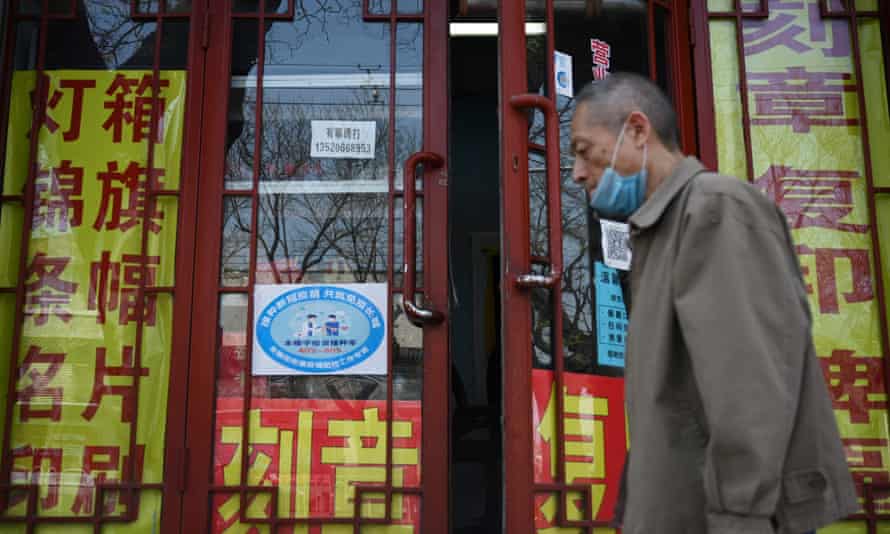Chinese capital rolls out grading system as part of campaign to vaccinate 560m people by June

Beijing authorities are colour-coding buildings to show the public the rates of vaccination among businesses’ employees, as part of a campaign to vaccinate more than 560 million people by June.
In recent weeks, green signs have appeared in the shopping centre in the Chinese capital’s financial district. The circular design showed a health worker in full PPE, holding a giant syringe and a medieval knight-style shield, and text declaring the vaccination rate of workers in the area was more than 80%. Other buildings with rates of 40-80% were marked with a blue sign, while a rate below 40% was signposted red.
The colour-coded signs roughly align with the digital health codes for individuals, which became a ubiquitous element of China’s Covid management last year, and allowed people to travel outside quarantined buildings and zones if they had a green code on their phone app.

all people inside who should be vaccinated have been vaccinated. Photograph: Leo Ramirez/AFP/Getty Images
At a Macanese restaurant, the 23-year-old manager, who gave the surname Xu, said he and all 14 staff were vaccinated, granting the business a green sign. “The colour-coding started about half a month ago, and having the green code does help our sales,” he said. “Customers feel safer to dine here, and we’re now really busy in the afternoon.”
Xu is among more than 145 million Chinese people to have been vaccinated so far. He said he had received both doses, and had initially been worried about negative effects. “But I searched online and saw that many more people had already been vaccinated, so I felt safe.”
At a nearby building a young security guard, surnamed Wang, said he had taken the vaccine a few days ago. “It’s good to get rid of the worry and be able to work,” he said.
China, which has developed and manufactured a number of its own vaccines, is aiming to vaccinate 40% of its 1.4 billion people by the middle of this year. It is administering doses at a rate of 4.5 million people a day, but needs to reach an extra 500,000 each day to achieve its goal, Caixin media group reported.
